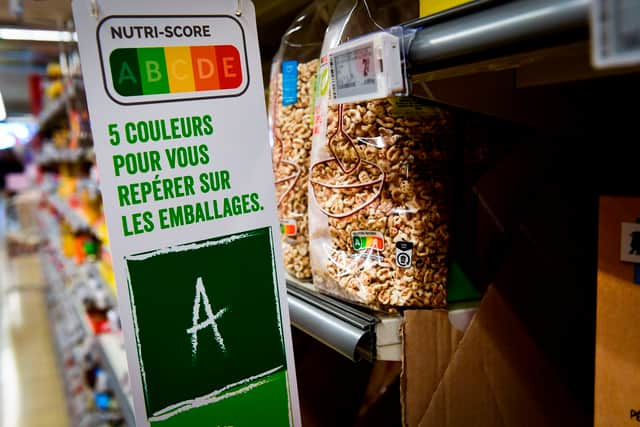Food labels should show the amount of exercise it takes to burn off the calories, new research suggests
and live on Freeview channel 276
Behavioural scientists are calling for food to be labelled with the amount of exercise required to burn off the item being consumed.
The calls come after researchers at Loughborough University, during a presentation to the International Congress on Obesity in Melbourne, surveyed more than 2,600 adults during the course of their findings.
Advertisement
Hide AdAdvertisement
Hide AdThey found that labels with information, such as how many minutes of exercise it would take to burn off a chocolate bar, were far more likely to be understood, compared with a traffic light system currently in place.
In total, 44 per cent of those surveys said it was more likely to help them avoid high calorie foods, compared with 28 per cent who thought a traffic light system would be more effective.
Those surveyed also felt that packaging warning them just how long it would take to walk off fatty and sugary foods was more likely to catch their attention.
Why would food labelling help?


Researchers from Loughborough University have said the study showed consumers felt better able to make decisions when armed with such information, with a majority of those in favour of the packaging information, known as physical activity calorie equivalent (Pace) labels, used on treat foods, such as chocolate and cakes.
Advertisement
Hide AdAdvertisement
Hide AdIn this instance, it would show how much walking would be required to burn off a treat item rather than consulting a website or dieting app to find out ahead of time.
Professor of Behavioural Medicine Amanda Daley, at Loughborough University, found that Pace labelling was most popular among younger age groups, as well as those who were more active.
“The next steps are to test whether Pace labelling reduces the purchases of high-calorie foods and drinks in different food settings such as restaurants, vending machines, coffee shops and pubs” researchers concluded at their presentation.
The survey also found participants also wanted to see such labels used in fast food outlets, supermarkets, on takeaway menus and on vending machines.
Advertisement
Hide AdAdvertisement
Hide AdWhat information is currently on food labels?
The NHS website on food labelling had stated that currently most pre-packed foods have a nutrition information label on the back or side of the packaging.
These labels must include the amount of energy in kilojoules (kJ) and kilocalories (kcal), usually referred to as calories.
Food labels must also include information on fat, saturates (saturated fat), carbohydrate, sugars, protein and salt. They may also include other nutrients, like fibre.
All nutrition information is provided per 100 grams or per 100 millilitres and sometimes per portion of the food or drink.
Advertisement
Hide AdAdvertisement
Hide AdFront-of-pack labels usually give a quick guide to energy (calories), fat content, saturated fat content, sugars content and salt content.
Some front-of-pack nutrition labels use the “traffic light” system also; a colour-coded nutritional information label that tells customers at a glance if the food has high, medium or low amounts of fat, saturated fat, sugars and salt.
Comment Guidelines
National World encourages reader discussion on our stories. User feedback, insights and back-and-forth exchanges add a rich layer of context to reporting. Please review our Community Guidelines before commenting.
